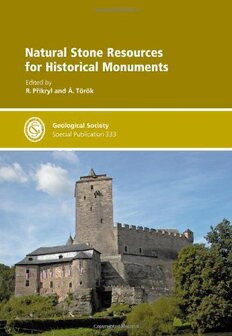
Natural stone resources for historical monuments PDF
234 Pages·2010·7.74 MB·English
Most books are stored in the elastic cloud where traffic is expensive. For this reason, we have a limit on daily download.
Preview Natural stone resources for historical monuments
Description:
Natural stone is considered to be a versatile, durable and aesthetically pleasing building material. From the beginning of civilization, important structures and monuments have been built from, or based on, natural stone. Until the end of the nineteenth century, the use of local stone resources was mostly in balance with the local environment. Strict environmental legislation has resulted in the closing of many long-standing quarries in industrialized countries, which has led to a shortage of traditional stone varieties. This has caused problems for restoration practice. Cheap, imported stone from less industrialized countries has become more widely available in recent years. Some of the issues related to built stone conservation and restoration covered by this volume are: the establishment of inventories of possible replacement stones; understanding the decay mechanism and use of preventive conservation methods for slowing down decay processes; evaluation of the properties of natural stone; and assessing the risks of using replacement stones of different qualities.The Geological Society of LondonFounded in 1807, the Geological Society of London is the oldest geological society in the world, and one of the largest publishers in the Earth sciences.The Society publishes a wide range of high-quality peer-reviewed titles for academics and professionals working in the geosciences, and enjoys an enviable international reputation for the quality of its work.The many areas in which we publish in include:-Petroleum geology-Tectonics, structural geology and geodynamics-Stratigraphy, sedimentology and paleontology-Volcanology, magmatic studies and geochemistry-Remote sensing-History of geology-Regional geology guides
See more
The list of books you might like
Most books are stored in the elastic cloud where traffic is expensive. For this reason, we have a limit on daily download.
